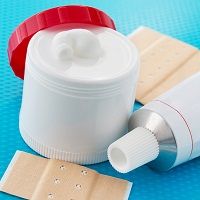Adding Topical Corticosteroids to a Regimen of Etanercept in Patients with Plaque Psoriasis
The addition of a topical corticosteroid to once-weekly etanercept produces similar outcomes among patients with moderate to severe plaque psoriasis as a regimen of twice weekly etanercept at the same dose.

Does the use of topical corticosteroids in combination with etanercept treatment improve outcomes compared to etanercept treatment alone in patients with plaque psoriasis? Or, failing that, can the addition of a topical corticosteroid agent to the treatment regimen produce similar results at lower doses of etanercept?
The authors of “A Randomized, blinded assessor study to Evaluate the efFIcacy and safety of etanercept 50 mg once weekly plus as Needed topical agent vs. Etanercept 50 mg twice weekly in patients with moderate to severe plaque psoriasis (REFINE),” published in the Journal of the European Academy of Dermatology and Venereology (JEADV), evaluated the safety and efficacy of adding topical corticosteroid therapy to the treatment regimen of patients with plaque psoriasis who were switching from an initial to a maintenance dose of etanercept.
All participants in this randomized, open-label clinical trial had been diagnosed with moderate to severe plaque psoriasis and had psoriasis-affected body surface area (BSA) ≥10% and Psoriasis Area and Severity Index (PASI) score ≥10.
They were treated with twice-weekly etanercept 50 mg for 12 weeks. At Week 12, participants were randomized 1:1 to either continue on twice-weekly etanercept 50 mg for another 12 weeks or to receive once-weekly etanercept 50 mg plus a topical corticosteroid (to be taken on an as-needed basis) for 12 weeks.
According to the authors, “Patients receiving topical agents were treated as needed to achieve a target static physician global assessment (sPGA) score of 0 (clear). Topical agent was selected by the investigator from hydrocortisone 2.5%, betamethasone valerate 0.1%, betamethasone dipropionate 0.05%, clobetasol 0.05%, calcitriol, or calcipotriol plus betamethasone dipropionate 0.05%. Change in topical agent was allowed.”
The primary efficacy endpoint for this study was percentage change in PASI score from week 12 to week 24. Secondary efficacy endpoints included:
- Percentage change in PASI score from baseline to weeks 12, 16, 20 and 24 and from week 12 to weeks 16 and 20
- Proportion of patients achieving 50% improvement in PASI score (PASI 50), PASI 75 and PASI 90 from baseline to weeks 12, 16, 20 and 24
- Achievement of static physician global assessment (sPGA) score of “clear/almost clear” (score of 0/1) at weeks 12, 16, 20 and 24
- Change in percentage BSA involvement from baseline to weeks 12, 16, 20 and 24 and from week 12 to weeks 16, 20 and 24
For the trial, 144 patients were randomized to receive treatment with etanercept alone, and 143 were randomized to etanercept plus a topical agent. The study population was “predominantly white (87.7%); most patients were men (64.8%), and mean (SD) age was 45.3 (13.9) years,” with similar demographic and clinical characteristics across treatment arms.
The authors reported that “the percentage change from week 12 in PASI score was similar between treatment arms at weeks 16, 20, and 24.”
Also, “for the primary endpoint, the difference (95% CI) between treatment arms in change in PASI score from week 12 to week 24 was 16.2% (−3.5%, 35.8%). The difference (95% CI) between treatment arms in mean percentage change in PASI score from week 12 to week 24 was -8.9 (−66.0, 48.1) in patients with prior TNF-blocker exposure and 21.2 (0.3, 42.1) in patients without prior TNF-blocker exposure. The difference (95% CI) between treatment arms in mean percentage change in PASI score from week 12 to week 24 was 17.0 (−10.0, 44.1) in patients with BMI ≤30 kg/m2 and 15.3 (−13.9, 44.5) in patients with BMI >30 kg/m2. Proportions of patients achieving PASI 50, PASI 75 and PASI 90 responses were similar between arms.”
For the secondary efficacy endpoint of sPGA score, the authors reported that “similar proportions of patients in each treatment arm achieved sPGA status of clear/almost clear (score of 0/1) at weeks 12, 16, 20 and 24.”
Approximately two-thirds of patients reported at least one adverse event, with the most common being nasopharyngitis, injection site reaction, and headache.
In their discussion of these results, the authors noted that patients who received once-weekly etanercept 50 mg with topical medications had similar PASI scores, PASI responses, sPGA status, and percentage of psoriasis-affected BSA compared with patients receiving twice-weekly etanercept 50 mg.